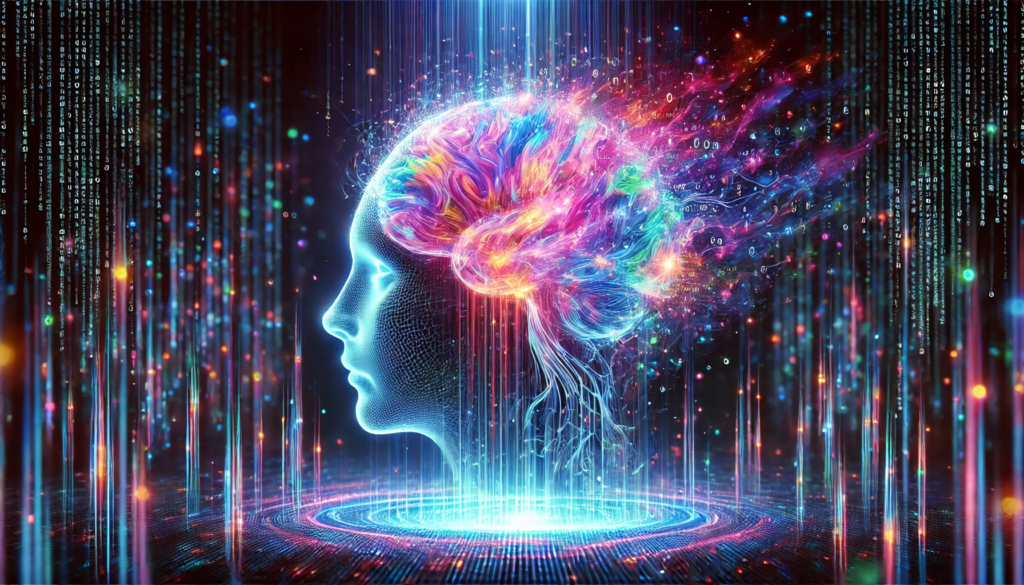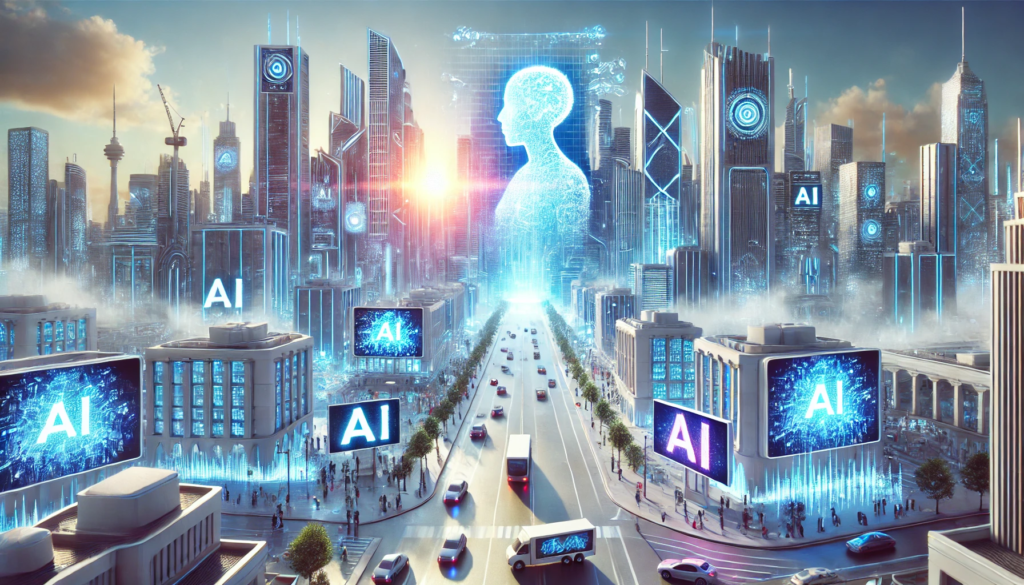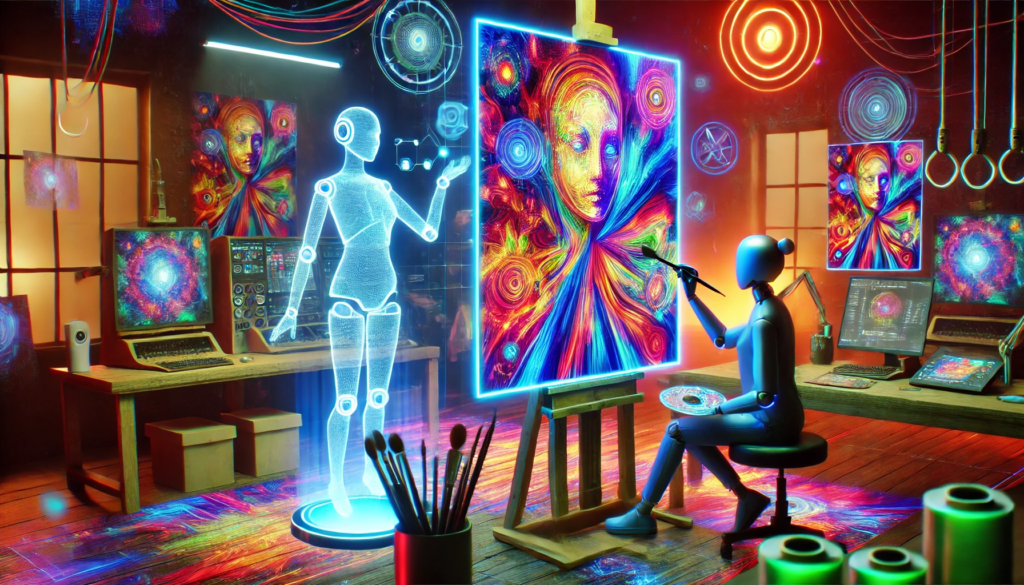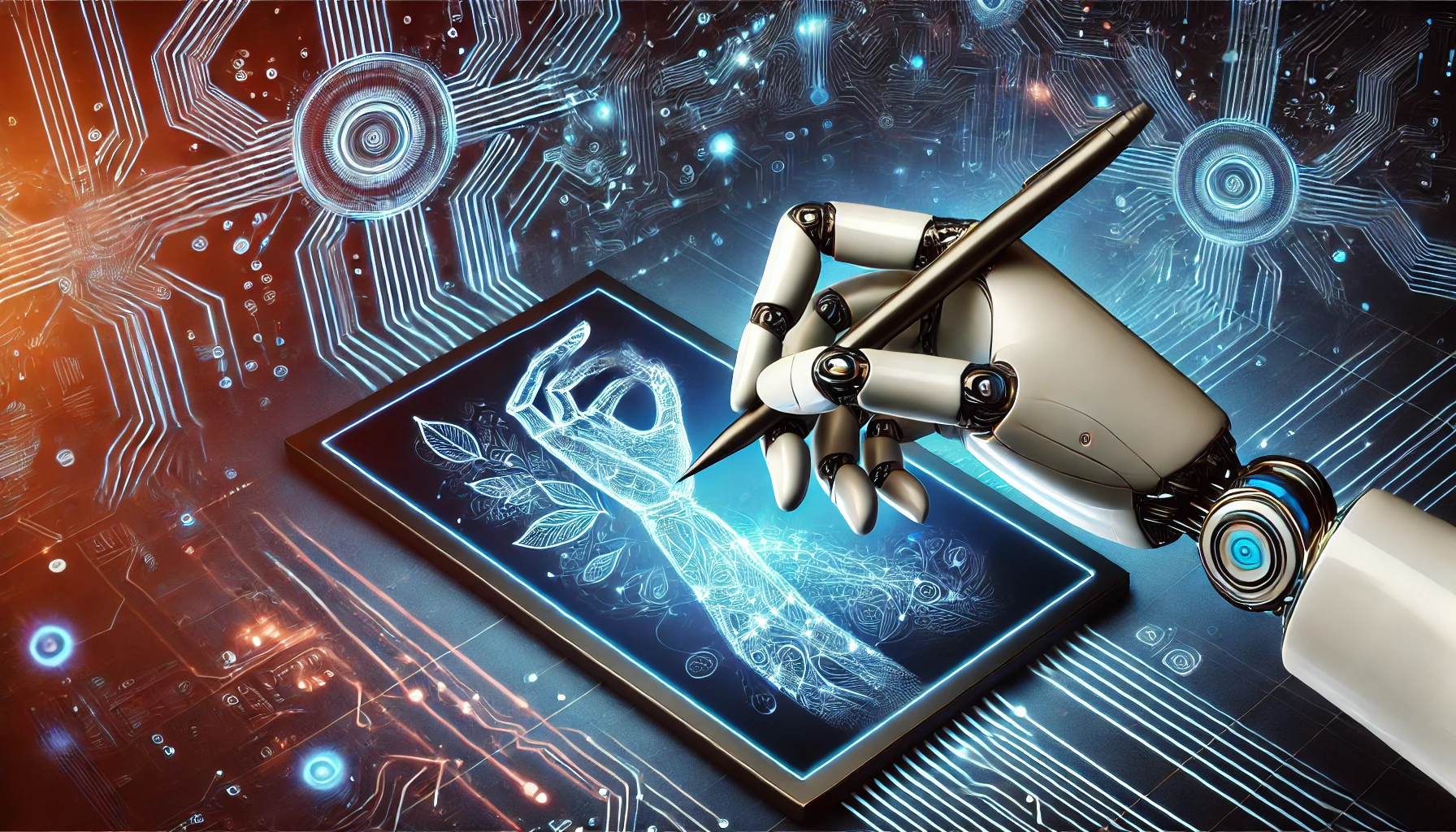AI’s newest sibling is generative AI. The reasoning behind this is that AI has shifted considerably in the last few years. It is now one of the most remarkable wonders that have the ability to change the world due to the drastic shift in technology. This leaves many duplicates behind AI’s other belongings because ‘generative’ does not mean giving something that already exists. All that one needs to understand is AI can now create completely new things, such as text, images, websites, or even music with the help of pre-fed data. Generative AI can stand the description of modern-era AI invention since unlike all its predecessors stemmed out from it did not specify into analyzing, forecasting, and categorising the already available data.
Indeed, the introduction of generative has drawn the attention of a variety of domains like finance, health, design, and most remarkably entertainment. This has the capability to change our way towards thoughtful judgement, decision making, and creativity. As numerous users set out to harness what it can achieve, there is no question that what ways additional advancements will come in the following years.
What is Generative AI?
As defined, generative encompasses machine Learning models capable of producing novel materials as opposed to merely classifying or editing what already exists. Creating new content might encompass writing, depicting, and recording videos, sounds, and even whole environments. These AI-driven systems are powered by deep learning approaches, and they analyze massive amounts of data to recognize the traits, the pattern, and correlation the data contains. That understanding enables them to generate results that reflect human-like creativity and freethinking.
Well known examples of Generative are known to be the most complex: Generative adversarial networks (GANs), Variational autoencoders (VAEs), and transformer algorithms such as OpenAI’s GPT, Generative Pretrained Transformer, VAEs. These systems are able to produce photographs that imitate genuine ones, write reasonably well-structured text, and compose music among other things.

How Does Generative AI Work?
Generative AI models learn from large amounts of data. For instance, when teaching AI to generate images, these models have a particular dataset of pictures their systems process. The AI attempts to learn the images’ internal shapes, color patterns, textures, and so on, allowing it to generate new images that have not been created yet, but look very visually similar to those already stored in its memory.
For any new text creation or for advanced GPT models, generative looks at every available document and tries to find phrases or sentences with sophisticated grammar structure and other relationships. After that the AI uses the newly acquired knowledge to create new articles, tell stories, or even compose poems and all that totally unlimited by the AI’s imagination.
GANs, however, have a different design philosophy. They have two antagonistic networks: generator and discriminator. The generator makes up new believable and sometimes amazing items, and the discriminator guesses if the generated item is real or fake. Gradually, as this guess-and-challenge improves, the output does too.

Applications of Generative AI
The uses of Generative AI seem to be never ending. Some of the major areas where this technology is having significant implications are listed below:
Creative Industries: Among the first to adopt Generative are developers from the creative fields such as art, music, and writing. Artists have begun applying Generative for the production of paintings. Designers for the generation of novel design concepts and even physicians for the creation of customized music. In the literary field, AI models such as GPT are slowly gaining traction. And assisting writers by crafting stories, dialogues and through entire chapters.
Entertainment: In the film and video game industries, both special effects composition. And animation utilizes Generative AI in the crafting of movies and video games. This new technology is aiding filmmakers alongside video game designers, making it possible to revolutionize visual storytelling alongside interactive experiences.
Healthcare: For the more traditional industries. Innovations like drug invention along with medicine imaging gets a boost from Generative tools. By forming new molecular structures, AI can prove to be beneficial in the quest to discover new drugs. Moreover, Generative AI models provide assistance to physicians in enabling auto-interpretation of medical images.
Finance: Generative AI is now able to imitate market conditions, and forecast financial changes. And create synthetic data for testing trading algorithm. These simulations enable institutions to make better decisions and control risks efficiently.
Personalization: Generative AI analyzes user activity to provide custom advertising, content. And recommendations mostly on e-commerce sections, and in digital marketing. These tailored suggestions ensure customer satisfaction and boost brand loyalty.
Education: Generative AI creates unique study plans, quizzes, and instructional content based on a user’s educational requirements. AI is changing the educational landscape by customizing the experience for each learner.

Advantages of Generative AI
The emergence of Generative AI has a number of advantages, both from a technological and practical point of view. Below are some of the main benefits:
Creativity and Innovation: Generative can aid in the development of new avenues for creativity. Giving new ways of thinking to creator advocates, artist, designers, and other professionals. It has the capacity to change fields like fashion, music, entertainment, and others, and industries that need creativity and innovation.
Automation of Repetitive Tasks: Generative AI enables the user to automate a lot of repetitive. And mundane work that is used over and over again. For instance, a content creator can make use of Generative AI to produce a draft or in some cases complete a writing work with very little input. Effort, or even time. As an example, marketers may utilize AI to compose product descriptions. Messages for social media accounts, as well as other content needed automatically.
Enhanced Decision-Making: Generative AI can help businesses and organizations enhance their decision making by providing synthetic data and running simulations. Generative is particularly useful in finance, health care, and marketing. Because these industries depend on real data to make any strategies.
Improved Personalization: As a previously stated, Generative AI is capable of personalization which goes beyond the general norm and expectation. AI can assist in personalizing buying experience as well as producing study materials geared on the specific person’s preferences and the relevant materials.

Challenges and Ethical Thoughts
Generative AI has many advantages but also has a set of challenges and ethical issues. One of the biggest concerns is misuse. For example, deepfakes: videos or audio clips that are realistic but fake. Additionally, AI can generate content to be as harmful as possible and would be indistinguishable from authentic material.
The other challenge is bias risk in Generative models. Such models are trained using existing data, which means that they can unintentionally embed existing biases in the data. For example, a Generative AI trained on biased datasets will produce algorithms that are biased, discriminatory, and harmful.
Moreover, with the advent of Generative, questions about ownership rights come to the surface. For example, if an AI creates an artwork, a novel, or even a new utility, who claims them by right? The more progress AI makes, the more legal and moral consequences of AI-made content have to be dealt with.
The Future of Generative AI
The future of Generative is remarkable, especially with the world’s current advancements in computer science and machine learning. As these models progress, their capacity to produce useful content will increase, and so will their use in everyday life. AI can be integrated into countless industries, ranging from entertainment, to healthcare, and even in our daily life.
The use of generative AI combined with other emerging technologies such as robotics. Virtual reality (VR) and augmented reality (AR) is one area that holds a particular promise. For instance, AI algorithms can be incorporated in video games to develop virtual worlds. The same approach can be applied in AR for tailored experiences.
To summarize, the integration of AI into the society of the future has a long way to go. Nevertheless, Generative AI will alter industries and decision-making while enhancing creativity. This mighty technology can accomplish astonishing things. AI assistance will be able to transform and improve various sectors. It is vital that steps are taken to harness its full potential. Generative is bound to drastically change in the future.






Leave a Reply